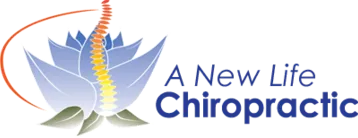Evaluation and treatment of your problem begins with a fact finding mission. We call this a medical history. This is when we take the time to listen to you. It is important that we gather basic information as you provide the details of your particular problem.
- When did your problem start?
- How did it start?
- What makes it worse?
- What makes it better?
- Is your pain confined to one area or does is spread into other areas?
- Have you had the problem before?
- Have you had any treatment before?
- Is your problem due to an injury or constant use?
YOUR INITIAL CHIROPRACTIC VISIT
Evaluation and treatment of your problem begins with a fact finding mission. This is when we take the time to listen to you. We call taking a medical history. It is important that we gather information by asking you to provide the details of your particular problem. When did your problem start? How did it start? What makes it worse? What makes it better? Is your problem confined to one area or does is spread into other areas? Have you had the problem before? Have you had any treatment before? Is your problem due to an injury, constant use, or another factor?
The information you provide tells us how to proceed. If there is any indication that your problem is due to a medical condition such as circulation problems, lung problems, kidney problems, intestinal problems, disease, or infection, then we will arrange for an appropriate medical evaluation. If your problem is clearly musculoskeletal, that is to say, mechanical in nature, then we carefully evaluate for the specific cause or causes of your condition. There can be many. They include: congenital conditions that you are born with such as scoliosis, short leg, or other skeletal variations, injured muscles, called strains; stretched ligaments, called sprains, contusions such as after a sports injury, work injury, fall, or auto injury; disc problems; degenerative changes such as degenerated discs and arthritis; and other conditions causing pain from the joints of the spine and other areas of the body.
The specific cause of your problem is determined by a careful, methodical examination, paying close attention to an array of orthopedic and neurologic tests. Basically this means that we use various positions and movements to ask your body questions, and the answers tell a story which leads to an understanding of your problem, which we call a diagnosis. The goal is to develop as high a level of understanding of your condition as possible. X-rays which are a very important diagnostic tool may be done on site when necessary.
Depending on your particular diagnosis, treatment can consist of one or more of the following:
- Advice on how you perform activities, i.e., behavior modification
- Instruction in specific stretches and exercises, or changes to your exercise routines
- Spinal manipulation, also known as a spinal adjustment
- Spinal decompression, also known as Cox flexion-distraction manipulation
- Electrical stimulation
- Ultrasound
- Acupuncture
Goals of treatment vary with the individual, but, in general, we want to see noticeable improvement in one week, and significant improvement in two.





